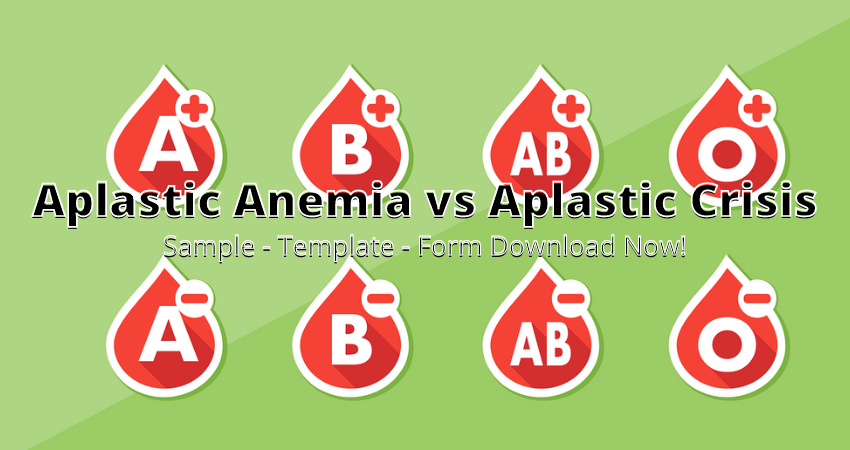Aplastic Anemia vs Aplastic Crisis ⏬👇
Aplastic anemia and aplastic crisis are two different conditions, but both describe a disease that affects the bone marrow. Aplastic anemia occurs when cells fail to develop properly and die, leaving the body without enough of these cells to make normal blood cells. This results in a decrease in red blood cells (anemia). Aplastic crisis describes the temporary stoppage of production of all types of blood cells by the bone marrow due to exposure to drugs or toxins.
Aplastic crisis occurs in people with chronic conditions like lupus or cirrhosis and is triggered by severe infection, trauma, or exposure to toxic chemicals. On the other hand, aplastic anemia is a rapidly progressive form of marrow failure that often develops in response to an underlying medical condition and can be fatal without prompt treatment.
They are both characterized by the improper production of blood cells in the bone marrow. In aplastic crisis, RBCs and WBCs are produced but no platelets or PRP are produced. Aplastic crises can be easily treated with just red blood cell transfusions in order to replace what is missing in the bloodstream. In aplastic anemia, all three types of normal blood cells are not produced, which requires treatment to replace those particular blood cell lines over time as well as other treatments that may be more severe.
What does Aplastic Crisis Mean?
Aplastic crisis is a type of marrow failure that occurs in people who have aplastic anemia. The most common cause of aplastic crisis is cytotoxic medication, such as drugs used in chemotherapy or radiation therapy, according to the National Heart, Lung and Blood Institute (NHLBI).
What does Aplastic Anemia?
Aplastic anemia (AA) is a serious medical condition that destroys your body’s ability to produce new red blood cells, white blood cells (which fight infection), and platelets (which help your blood clot). When this happens, your bone marrow doesn’t make enough healthy blood cells to carry oxygen, fight infection, and help prevent bleeding. This can lead to serious complications and early death if treatment isn’t started right away.
It is also known as bone marrow failure or myelodysplasia. This disease causes the bone marrow to stop producing blood cells. Aplastic anemia can cause many symptoms including heart failure and other organ damage. There is no cure for aplastic anemia, but treatment can help ease the symptoms and prevent complications
What are the two types of Aplastic Anemia?
The two types of Aplastic Anemia are Pure Red Cell Aplasia and Pure White Cell Aplasia. The former is more common, while the latter is less common and usually develops after a patient has received chemotherapy or radiation therapy. Pure red cell aplasia is caused by obstructive jaundice, which means the liver cannot produce enough bile for the gallbladder. Gallstones cause gallbladder stasis, which leads to abnormalities in mini organs called tubules. These changes prevent healthy red blood cells from maturing and causes patients to exhibit symptoms when they receive medications that stimulate production of mature cells.
Email Bülteni
Yeni yazılarımızdan hemen haberdar olmak için kayıt olun.







